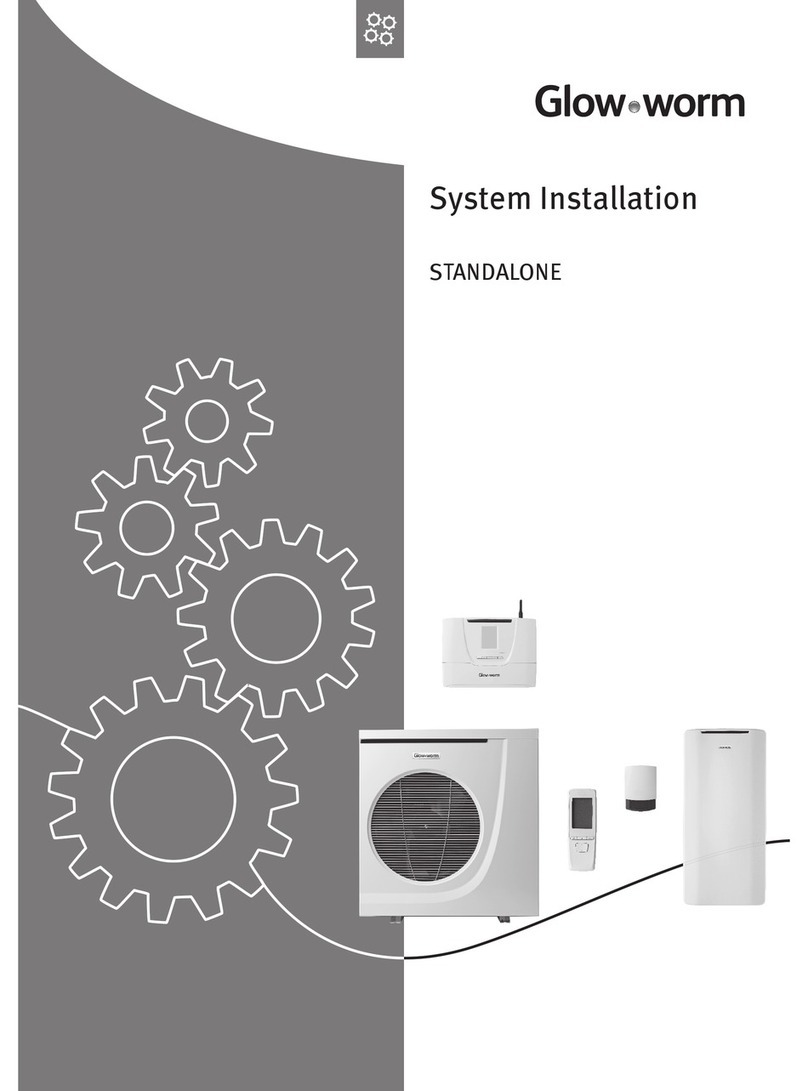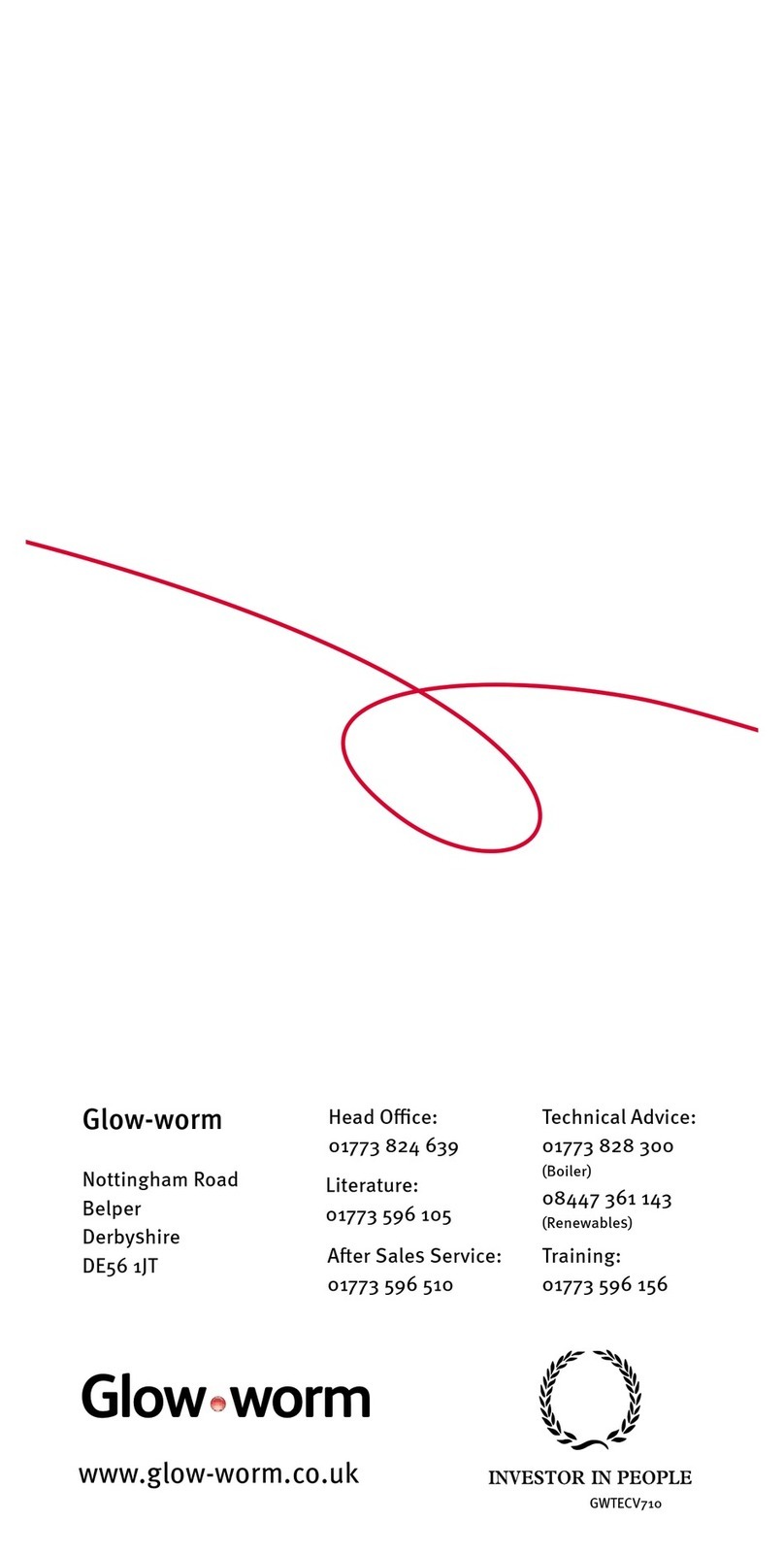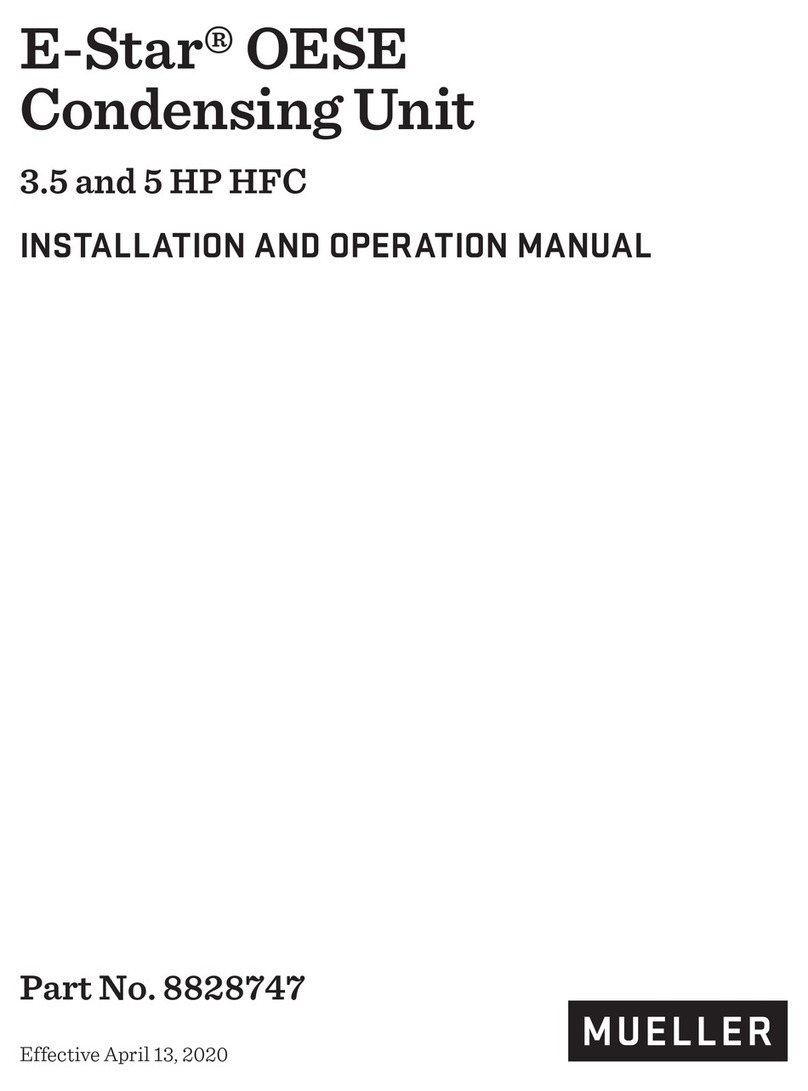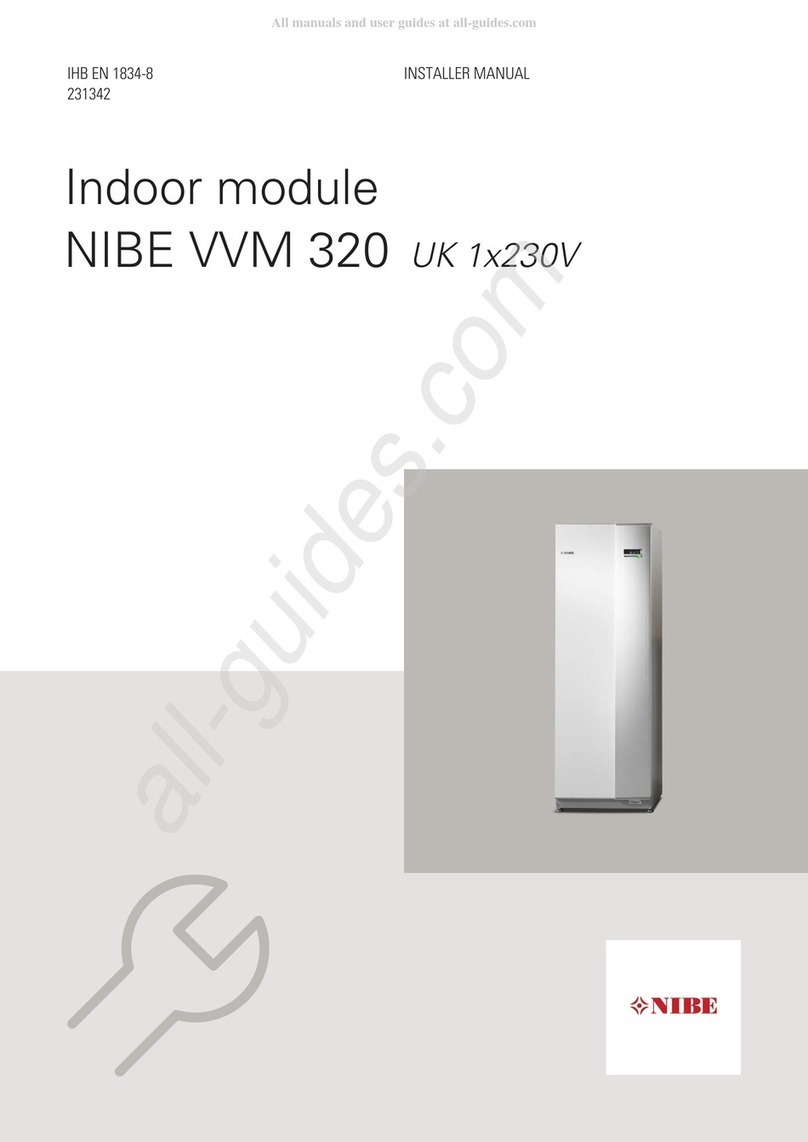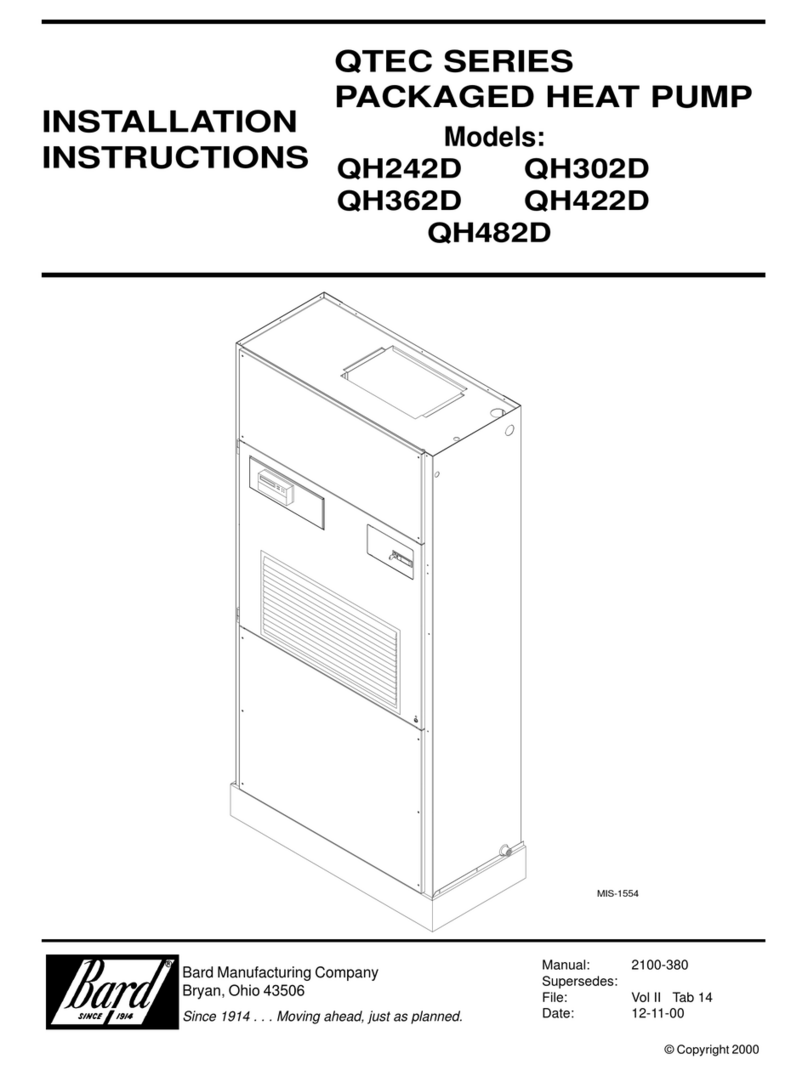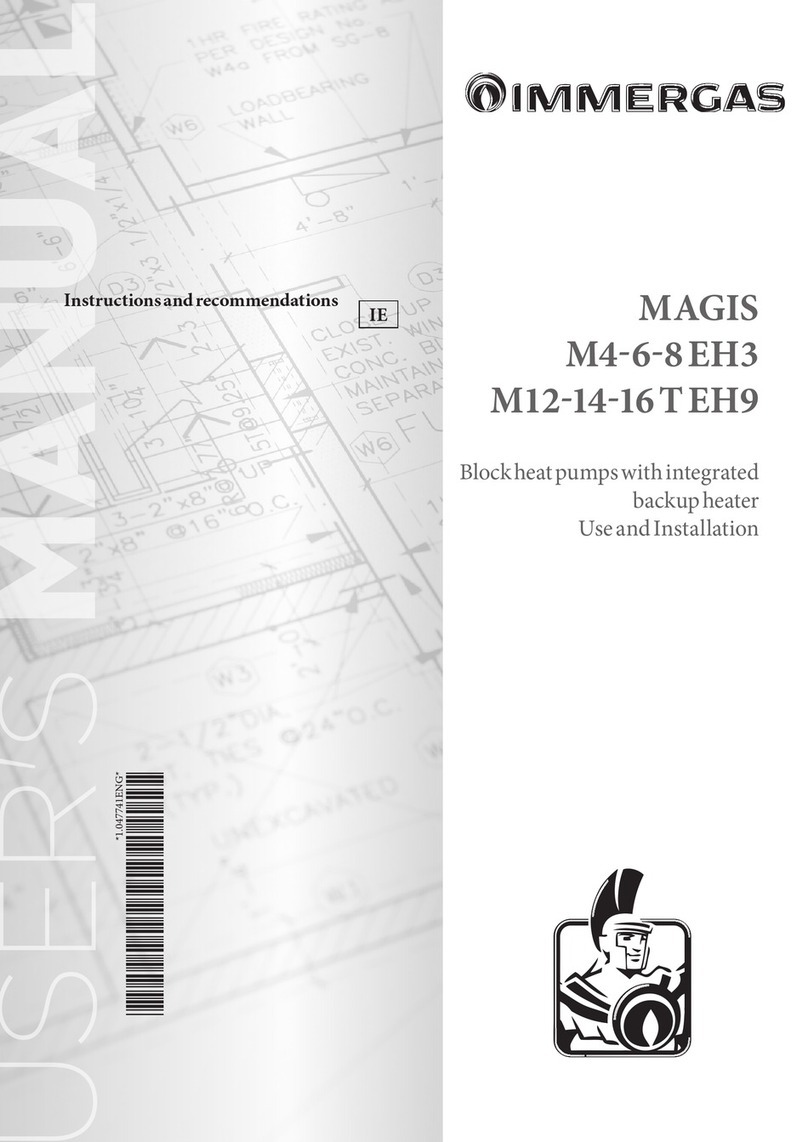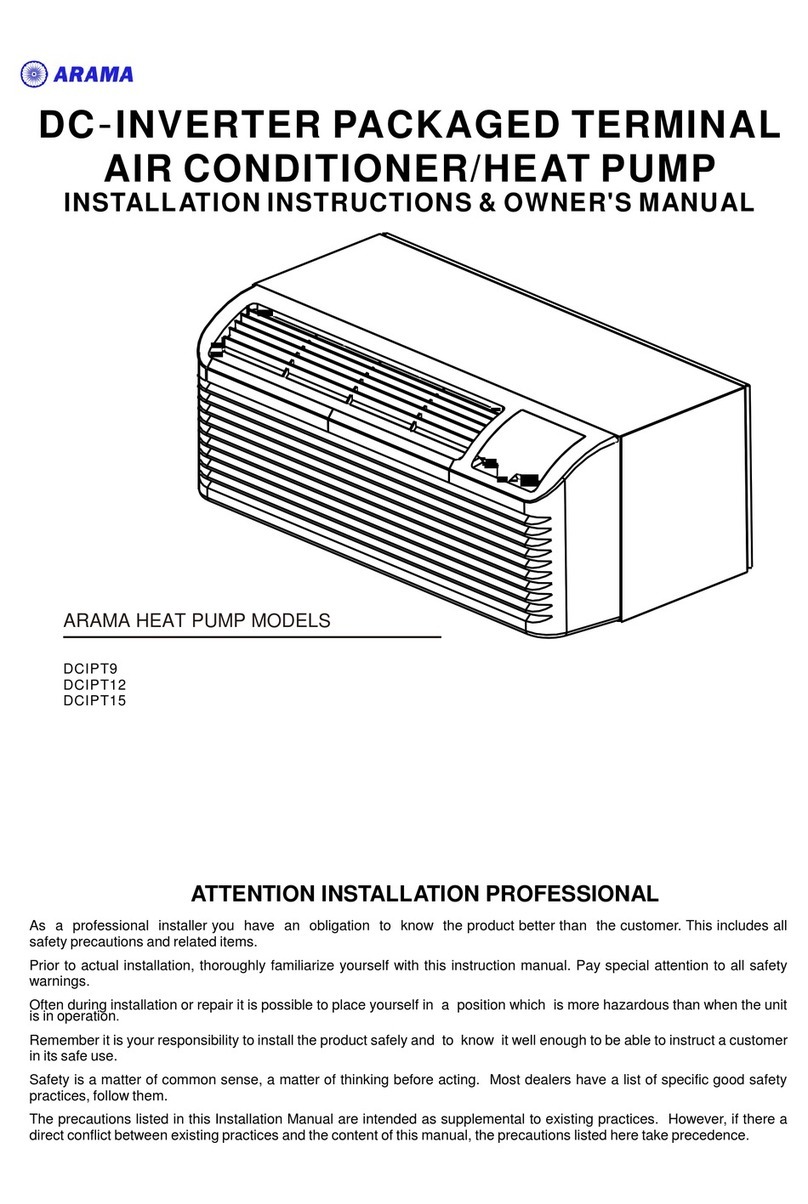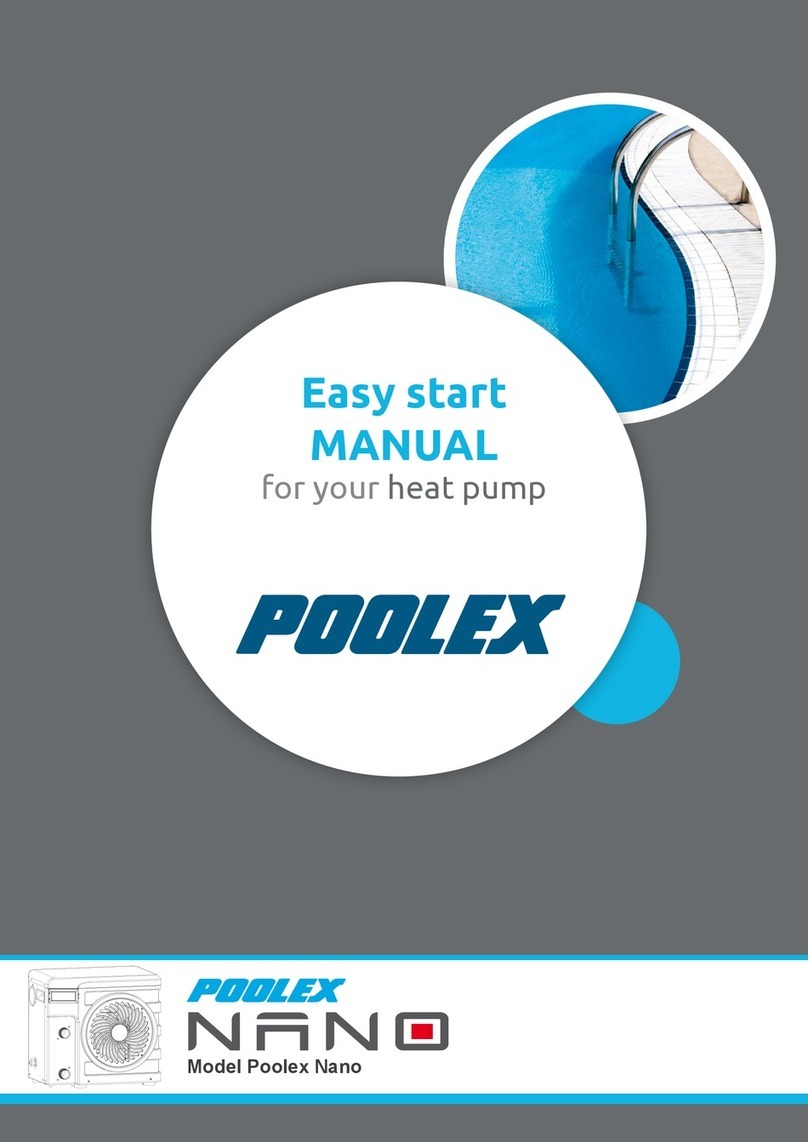Glowworm Envirosorb3 11 User manual

Installation manual
Envirosorb38
Envirosorb311
The energy you need

0020154078_00 - 02/13 - Glow-worm
2
1 Safety....................................................... 3
1.1 Symbols used ......................................................... 3
1.2 Qualifications ......................................................... 3
1.3 General safety advices............................................. 3
1.4 R410A Refrigerant ................................................... 3
1.5 Intended use........................................................... 4
1.6 Rules and regulations ............................................. 4
1.7 CE label .................................................................. 4
2 Notes on the documentation .....................5
2.1 Observe other applicable documents........................ 5
2.2 Storing documents.................................................. 5
2.3 Validity of the instructions ....................................... 5
3 Appliance description ............................... 5
3.1 Safety devices......................................................... 5
3.2 Concept of operation ...............................................5
3.3 Structure of the appliance........................................7
3.4 Type designation and serial number ......................... 8
3.5 Data plate description ............................................. 8
4 Mounting and installation ......................... 8
4.1 Preparing mounting and installation......................... 8
4.2 Mounting the appliance......................................... 10
4.3 Hydraulic installation ............................................ 11
4.4 Electrical Installation............................................. 12
5 Start-up.................................................. 17
5.1 Filling the hydraulic circuit..................................... 17
5.2 Activating the heat pump....................................... 17
5.3 Checking the operation of the device...................... 17
5.4 Adjustment of HP circuit flow ..................................17
5.5 Installation of side panel ....................................... 18
5.6 User information ................................................... 18
6 Maintenance........................................... 19
6.1 Observe maintenance intervals .............................. 19
6.2 Preparing maintenance.......................................... 19
6.3 Pre-maintenance instructions ................................ 19
6.4 Annual Maintenance.............................................. 19
6.5 Draining ............................................................... 19
6.6 Checking the appliance status codes ...................... 19
6.7 Checking the electrical installation......................... 20
6.8 Start-up after maintenance .................................... 20
7 Trouble-shooting .................................... 20
7.1 Fault diagnosis...................................................... 20
7.2 Error codes ........................................................... 20
8 Decommissioning ................................... 20
9 Recycling................................................ 20
9.1 Packaging............................................................. 20
9.2 Appliance ............................................................. 20
9.3 Refrigerant fluid .................................................... 20
10 Technical data......................................... 21
11 Appendix ................................................ 23
11.1 Table of Diagnosis codes........................................ 23
11.2 Fault codes ........................................................... 24
EN
TABLE OF CONTENTS

0020154078_00 - 02/13 - Glow-worm 3
SAFETY
1 Safety
1.1 Symbols used
The warning notes are classified in accordance with the
severity of the possible danger using the following warning
signs and signal words.
Warning symbol Explanation
aDanger!
Immediate danger to life or risk of severe
personal injury.
eDanger!
Risk of death from electric shock.
aWarning!
Risk of minor personal injury.
bCaution!
Risk of material or environmental damage.
1.2 Qualifications
Any work carried out must be by suitably qualified personnel.
∙Incorrect installation can cause damage to the unit, to the
site or injury to others.
1.3 General safety advices
∙Before to read this chapter, also read the general safety
advices of the operating instructions.
1.3.1 Danger to life by electric shock
Touching live connections can cause serious personal injury.
∙Before carrying out any work on the product, switch offthe
power supply.
∙Secure the power supply against being switched on again.
1.3.2 Danger to life due to missing or not properly
working safety devices
Missing safety devices can cause life-threatening scalding
and other injuries, for example by burst pipes.
The information contained in this document do not show all
schemes required for a professional installation of safety
devices.
∙Install the necessary safety devices in the system.
∙Inform the user about the function and location of safety
devices.
∙Observe the relevant national and international laws,
standards and guidelines.
1.3.3 Danger due to improper use
Nonprofessional work on the product can cause damage to
the installation and as a consequence even personal injury.
∙Only work on the product if you are a competent person.
1.3.4 Risk of material damage by additives in the
heating water
Frost and corrosion protection agents can cause changes
to seals, noise during heating mode and may lead to other
consequential damage.
∙Do not use any unsuitable frost or corrosion protection
agents.
1.3.5 Risk of material damage caused by
unsuitable tools
The use of unsuitable tools or improper use thereof may cause
damage, such as gas or water leaks.
∙When tightening or loosening threaded connections,
always use suitable opened spanners, but do not use pipe
wrenches, extensions, etc.
1.3.6 Risk of structural damages by escaping water
Incorrect installation can cause leakages.
∙Make sure there are no stresses in the hydraulic lines.
∙Correctly position the seals.
1.4 R410A Refrigerant
aDanger!
Risk of injury due to incorrect work on the refrig-
erant circuit!
The appliance contains refrigerant fluid and must
be handled with caution. Any work on the refriger-
ant circuit must be performed by trained and
approved personnel.
• Only work on the refrigerant circuit if you are a
trained and approved specialist equipped with
appropriate protective equipment.
• Perform draining and filling operations in a
properly ventilated area.
• Avoid any contact with the skin or eyes.
R410A fluorinated greenhouse gases are contained within
a fully sealed system (Kyoto Protocol PES 1975). Under
normal use and conditions, the refrigerant is not dangerous.
Degassing refrigerant fluid into the atmosphere is prohibited,
except when necessary to ensure personal safety.
The refrigerant fluid contains gases that, when released into
the atmosphere, may affect the environment, contributing
to the greenhouse effect and an increase in temperature.
The risk of leakage cannot be excluded for devices intended
to operate for many years and subject to the effects of the
environment.
∙Use only R410A refrigerant.
∙The tools used for charging, for measuring pressure, for
creating a vacuum and for the recovery of the fluid must be
compatible with and employed solely for R410A.

0020154078_00 - 02/13 - Glow-worm
4
SAFETY
∙Welding is to be carried out with nitrogen and the circuit’s
air-tightness is to be tested under pressure, with nitrogen.
∙Refilling must be done at the liquid phase.
∙In case of leakage, do not add fluid: drain the remaining
fluid from the circuit and eliminate, in accordance with the
applicable regulations.
∙Create a vacuum in the circuit with a maximum pressure of
10 mbar (10 x 102 Pa) (static pressure).
∙Bleed the circuit before any welding work.
∙Comply with the values given in chapter 10 when charging
with refrigerant.
1.5 Intended use
The product is a state-of-the-art product which has been
constructed in accordance with recognised safety regulations.
Nevertheless, there is still a risk of injury or death to the user
or others or of damage to the product and other property in
the event of improper use or use for which it is not intended.
The heat pump is a air -water system which heats all types of
buildings by using the energy contained in the outside air.
The system enhances the recuperated energy so that it can
be utilized by traditional heating (heating floor and/or low-
temperature radiators).
The heat pump cannot be used without its control box
Systempro.
Intended use includes the following:
- observing the included operating, installation and
maintenance instructions for this product and any other
parts and components of the system
- installing and fitting the product in accordance with the
product and system approval
- complying with all of the inspection and maintenance
conditions listed in the instructions.
Any other use than the use described in the instructions at
hand or any use extending the described use is not intended.
Any direct commercial or industrial use is also deemed to be
improper.
Any unintended use is prohibited.
1.6 Rules and regulations
On installing and commissioning the appliance you must
adhere to the technical rules, standards and provisions in
effect at the time.
1.7 CE label
The CE mark indicates that the products described in these
instructions are in compliance with the following directives:
- Directive 2006/95/EC of the Council with amendments
"Directive Concerning Electrical Equipment for Use Within
Specific Voltage Limits" (Low voltage directive)
- Directive 2004/108/EC of the Council with amendments
"Directive Concerning Electromagnetic Compatibility"
- Directive 97/23/EEC of the Council with amendments
"Directive Concerning pressure equipment"
- Directive 2007/1494/EC of the Council with amendments,
dated December 17, 2007, determining, in accordance with
Directive 2006/842/EC of the Council with amendments,
the label type and the additional requirements as regards
the labelling of products and equipment containing certain
fluorinated greenhouse effect gas.
- Directive 2006/842/EC of the Council with amendments
of May 17, 2006 on certain fluorinated greenhouse gasses
(OJEU of June 14, 2006)
1.8 Approvals
This product has been fully tested in accordance with:
- BS EN 14511:2011
1.8.1 Local regulations
Benchmark places responsibilities on both
manufacturers and installers. The purpose is to
ensure that customers are provided with the correct
equipment for their needs, that it is installed,
commissioned and serviced in accordance with the
manufacturer’s instructions by a competent person
approved at the time by the Health and Safety
Executive and that it meets the requirements of the
appropriate Building Regulations.
The Benchmark Checklist can be used to demonstrate
compliance with Building Regulations and should be
provided to the customer for future reference.
Installers are required to carry out installation,
commissioning and servicing work in accordance with
the Benchmark Code of Practice which is available
from the Heating and Hotwater Industry Council who
manage and promote the Scheme.
∙Visit www.centralheating.co.uk for more information.

0020154078_00 - 02/13 - Glow-worm 5
SAFETY
1.9 Regulations
1.9.1 Statutory requirements
IMPORTANT
Where no British Standards exists, materials and equipment
should be fit for their purpose and of suitable quality and
workmanship.
The installation of this appliance must be carried out by a
competent person in accordance the rules in force in the
countries of destination.
Manufacturer’s instructions must not be taken as overriding
statutory requirements.
Standards
On installing and commissioning the appliance you must
adhere to the technical rules, standards and provisions in
effect at the time.
Reminder of existing regulatory acts
- EC regulation No. 20372000 from the 29th of June 2000
This European regulation repeals regulation No. 3093/94
and presents the elimination schedules of CFC and HCFC.
It also deals with the collection of refrigerants, system
leaks, particularly systems containing more than 3 kg of
CFC or HCFC, as well as the minimum level of qualification
required by the technicians.
- EC regulation No. 0842/2006 from the 17th of May 2006
regarding the containment, use, collection and disposal
of the fluorinated greenhouse gases, the labelling and
elimination of the products and equipment containing
these gases, the restriction of use and banning of certain
products from the market, as well as the training and
certification of personnel and companies operating in
the activities targeted by this regulation: refrigeration,
air-conditioning, heat pumps and fire protection systems
containing greenhouse gases.
1.9.2 Other regulations
Control of Substances Hazardous to Health
Under Section 6 of The Health and Safety at Work Act 1974,
we are required to provide information on substances
hazardous to health. The adhesives and sealants used in this
appliance are cured and give no known hazard in this state.
The refrigerant used in this appliance is R410a the use of
which is strictly controlled by F Gas regulation EN842/2006.

0020154078_00 - 02/13 - Glow-worm
6
NOTES ON THE DOCUMENTATION
2 Notes on the documentation
∙These instructions consist of, Installation, Servicing, Fault
Finding and Replacement of Parts. The instructions are an
integral part of the appliance and must be handed to the
user on completion of the installation.
2.1 Observe other applicable documents
∙Observe absolutely all operating and installation
instructions enclosed with the product, for the various
parts and components of the system.
2.2 Storing documents
∙Pass these instructions and all other applicable documents
to the system user.
The system user should retain these instructions so that they
are available when required.
2.3 Validity of the instructions
These instructions apply exclusively to:
Type overview
Product Type designation Article number
Envirosorb3 8 0010011967
Envirosorb3 11 0010011968
For all system schematics and information please refer to the
heatpump system manual.
3 Appliance description
3.1 Safety devices
- The appliance is designed to operate with an outside
temperature between -20°C and 35°C in heating mode and
between -20°C and 46°C for tank heating.
- A high pressure switch limits the operation of the
appliance when the refrigerant fluid pressure exceeds
41.5 bar (gauge pressure) (41.5 x 105 Pa) (relative pressure).
- When the appliance is shut down, the compressor
crankcase heater is activated below 7°C at the compressor
outlet to prevent any damage when restarting.
- If the compressor outlet temperature is below 1°C, the
appliance will not allow the compressor to start.
- A temperature sensor at the compressor outlet limits
the operation of the heat pump when the temperature
measured by this sensor is higher than the maximum
limit. This value varies depending on the evaporation and
condensation temperatures.
- The appliance is equipped with a measuring device that
checks the water flow rate at start-up.
- An anti-freezing protection device runs the heat pump
hydraulic pump when the hydraulic circuit temperature is
lower than 3°C. However, it is necessary to add anti-freeze
to the heat pump hydraulic circuit. Without the addition
of outside energy or in the case of a power cut, the circuit
water can drop below the freezing point.
3.2 Concept of operation
A heat pump (HP) is a thermodynamic machine which
transfers heat from one location to another. To do so, it
employs the characteristics of a refrigerant fluid.
The system is composed of the following circuits:
- The refrigerant circuit which transfers heat to the
water circuit following the evaporation, compression,
condensation and expansion of the fluid.
- The heating circuit.
3.2.1 Heating mode
1
2
34
56
Key
1 Fin exchanger
2 Four way valve
3 Ventilating fan
4 Compressor
5 Expansion valve
6 Plate to plate heat exchanger
3.2.2 Defrosting mode
1
2
34
56
Key
1 Fin exchanger
2 Four way valve
3 Ventilating fan
4 Compressor

0020154078_00 - 02/13 - Glow-worm 7
APPLIANCE DESCRIPTION
5 Expansion valve
6 Plate to plate heat exchanger
3.2.3 Operating limits in heating mode
60
50
70
40
30
20
10
0-20 -10 0 10 20 30 40 50
[-20;15]
[-20;43]
[35;15][28;15]
[46;26]
[46;58]
[35;63]
[35;58]
[35;26]
[28;63]
[2;63]
[-15;53]
A
B
Key
Heating operating limits
Domestic hot water operating limits
A Water temperature
B Air temperature
3.2.4 Permitted hydraulic configurations
3.2.4.1 Direct connection to the installation heating
circuit
3.2.4.2 Indirect connection with a hydraulic module
iFor detailed configurations please refer to the
system manual.

0020154078_00 - 02/13 - Glow-worm
8
APPLIANCE DESCRIPTION
3.3 Structure of the appliance
3.3.4.1 Hydraulic and refrigerant schematic
A
B
1
2
3
5
15
16
14
17
22
18
23
19
21
24 25
26
13
12
9
10
8
7
6
11
4
20
Key
1 Ventilating fan
2 Outside air temperature sensor
3 Finned heat exchanger
4 Finned heat exchanger temperature sensor
5 4-way valve
6 Heat pump return circuit temperature sensor
7 Expansion vessel
8 Modulating high performance pump including a water flow rate
sensor
9 Water bleed
10 Heat pump flow temperature sensor
11 Draining valve for the heat pump circuit
12 Plate to plate heat exchanger
13 Temperature sensor after plate to plate heat exchanger
14 High-pressure circuit maintenance valve
15 Refrigerant pressure switch
16 Refrigerant circuit high pressure sensor
17 Compressor discharge temperature sensor
18 Rotary compressor
19 Filter
20 Anti-slugging bottle
21 Electronic expansion valve
22 Compressor suction temperature sensor
23 Low-pressure circuit maintenance valve
24 Flow rate limiter in cooling mode
25 Filter
26 Gas buffer
A Heat pump return
B Heat pump flow

0020154078_00 - 02/13 - Glow-worm 9
MOUNTING AND INSTALLATION
3.4 Type designation and serial number
Data plate location:
1
1
Key
1 Data plate
The type designation and the serial number are shown on the
data plate.
3.5 Data plate description
The data plate contains the following data:
Abreviation/
symbol Description
Serial-no Commercial name and serial number
IP The electrical protection class
V/Hz The pump + compressor + regulatory devices supply
voltage
I max The maximum current
R410A The type of refrigerant fluid, the amount necessary
for filling
PSRThe max. working pressure of the cooling circuit
PSHmin
PSHmax Minimum and maximum hydraulic pressure
COP (Ax/Wxx)
The coefficient of performance (COP) for an air
temperature of xx°C and heating flow temperature
of xx°C
(
Ax/Wxx)
The heating power for an air temperature of xx°C
and heating flow temperature of xx°C
EER
(
Axx/Wx)
The Energy Efficiency Ratio (EER) for an air
temperature of xx°C and cooling flow temperature
of xx°C
(
Axx/Wx)
The refrigerating power f
or an air temperature of
xx°C and cooling flow temperature of xx°C
See chapter "CE label"
4 Mounting and installation
4.1 Preparing mounting and installation
4.1.1 Delivery, transport and installation on site
4.1.1.1 Transport
aWarning!
Risk of injuries due to big carrying loads.
Too big carrying loads can cause injuries, e.g. on
the backbone.
• Observe all relevant laws and other prescrip-
tions when carrying heavy products.
• Refer to chapter 10 for the weight of the appli-
ance.
• Plan two people at minimum to move
the appliance.
bCaution!
Risk of equipment damage due to appliance
transport.
If the appliance is tilted more than 45° during
transport, the refrigerant circuit can be damaged
which may result in complete failure of the instal-
lation.
• Do not tilt the appliance more than 45° during
transport.
1
1
Key
1 Transport strap

0020154078_00 - 02/13 - Glow-worm
10
MOUNTING AND INSTALLATION
∙Use the transport strap (1) to move the appliance.
Installation pipework must be designed and installed to
ensure venting of air from the system is possible.
∙Only lift the appliance from the rear and the side
containing the hydraulic connectors.
∙Attach the appliance to the two-wheeled trolley with a
strap.
∙Protect surfaces in contact with the trolley to avoid
scratching or damaging the appliance.
∙Use a sufficiently solid ramp to lower the appliance from
the pallet.
4.1.1.2 Unwrapping
13mm
C
A
B
D
E
2
3
4
1
Key
1 Bag of documents
2 Accessory box
3 Heat Pump
4 Transport strap
∙Remove the screws from the transport pallet at the front
and rear of the unit (E).
∙Remove the bag of documents (B) and the accessory box
(A).
∙Detach the transport strap (C).
∙Carefully remove the packaging and protections without
damaging the parts of the appliance (D).
4.1.1.3 Checking the equipment delivered
∙Check the contents of the packages.
The appliance is delivered with a bag of documents and a box
of accessories which contains the following items:
- 1 condensate drain assembly (adaptor + elbow + clip)
- 1 bag of seals
- 4 anti-vibration blocks
- 1 bleeding tube
4.1.2 Observing distances and mounting
clearances
iAll the drawings dimensions are shown in mm.
4.1.2.1 Product dimensions
162,6
162,6 778
1103
415
942

0020154078_00 - 02/13 - Glow-worm 11
MOUNTING AND INSTALLATION
4.1.2.2 Accessibility
C
B
D
A
A
E
Distance In heating mode only
A > 250 mm
B > 1000 mm
C > 120 mm
D > 600 mm
E > 300 mm
∙Comply with the distances above to obtain the correct air
flow and facilitate maintenance operations.
∙Make sure that the available space is sufficient for the
installation of the water system piping.
∙If the heat pump is installed in an area subject to heavy
snow fall, ensure that snow does not build up around
the appliance to maintain the distances given above.
Otherwise, install a backup heat generator in the
building’s heating system.
4.1.3 Appliance location
∙Observe current regulations.
∙Install the appliance outside.
∙Do not install the appliance:
- near a heat source,
- near flammable materials,
- near the ventilation points of adjacent buildings
- beneath deciduous trees.
∙Take into account the following when installing the heat
pump:
- prevailing winds,
- the noise generated by the fan and the compressor
- the visual impact on the surrounding neighbourhood.
∙Avoid areas exposed to strong winds directed against the
appliance’s air outlet.
∙Do not install the fan facing nearby windows. If necessary,
install a noise barrier.
∙Set the appliance on one of the following supports:
- concrete slabs,
- crane beam,
- concrete blocks.
∙Do not expose the heat pump to corrosive or dusty
atmospheres (near to dirt roads, for example).
∙Do not place near to stale air extraction fans.
∙Provide passages for electrical cables (very low and low
voltage).
4.1.3.1 Properties of the mounting surface
∙Before choosing the position of the device, carefully read
the warnings relating to safety and the instructions in the
installation and user manuals.
∙Place the appliance on a beam or concrete blocks or on the
wall supports sold separately.
∙Ensure that the appliance is protected from water and from
snow.
4.1.3.2 Condensate drain
aDanger!
Risk of injury due to freezing of condensates.
Condensates freezing in a passageway can cause
slips.
• Ensure that the drain system presents no risk
of condensates freezing on a passageway.
The condensates flow from the central drain located in the
bottom of the heat pump.
>100mm
∙Provide a condensate drain either into a bed of pebbles or
connected to a drain with installation of a siphon.

0020154078_00 - 02/13 - Glow-worm
12
MOUNTING AND INSTALLATION
4.2 Mounting the appliance
4.2.1 Opening the appliance
BA
A
C
4.2.2 Positioning the appliance
iThe heat pump must be installed with the anti-
vibration pads supplied. The anti-vibration pads
are used to raise the unit, limit the transmission
of vibrations and to facilitate the discharge of
condensates.
∙Install the appliance level so that the condensates drain
correctly.
4.3 Hydraulic installation
bCaution!
Risk of damage caused by contaminated lines!
Foreign bodies such as welding remnants, sealing
residue or dirt in the supply lines can cause dam-
age to the product.
• Flush the supply lines thoroughly before instal-
lation.
bCaution!
Risk of damage due to corrosion.
If plastic pipes that pass oxygen are used in the
heating installation, this may corrode or sludge
up the appliance’s heating circuit or the appliance
itself.
• If you use plastic pipes that pass oxygen in the
heating installation, add a corrosion inhibitor
to the circuit water.
4.3.1 Hydraulic connection
iInsulate the pipes (between the heat pump and
the installation including those underground)
with an UV- and high-temperature-resistant insu-
lation.
iIn order to avoid the transmission of vibrations to
surrounding structures, flexible hoses of at least
750mm in length should be used for the hydraulic
connections from the heatpump.
∙Do not weld pipes mounted up : this operation may
damage the seals.
∙If the heat pump is not located at the highest point of the
hydraulic circuit, install additional bleed valves in suitable
places.
∙Install the following components on the heat pump return
circuit.
Installation with
hydraulic module
Installation without
hydraulic module
- a drain tap
- an air separator (if
necessary)
- an anti-sludge filter
- an expansion tank, if the
length of the hydraulic circuit
is greater than the max.
permitted length (see table
below)
- a 3 bar (3 x 105Pa) safety
valve if the hydraulic module
does not have one
- a drain tap
- an air separator (if
necessary)
- an anti-sludge filter
- an expansion tank suitable
for the complete hydraulic
installation
- a 3 bar (3 x 105Pa) safety
valve
- a pressure gauge
(recommended)
Max. length of the hydraulic circuit DN 28
In the case of the installation of a module
without an expansion tank 30 m

0020154078_00 - 02/13 - Glow-worm 13
MOUNTING AND INSTALLATION
0.75m min.
1
2
3
8
5
4
4
5
6
7
9
Key
1 Return circuit ¼ turn shut-offvalve in the direction of the heat
pump (not included) (*)
2 Heat pump flow circuit ¼ turn shut-offvalve in the direction of
the building (not included) (*)
3 Flow heat pump circuit hose in the direction of the building (not
supplied)
4 O ring
5 Cap
6 Flow heat pump connection (Ø 1¼") to the building
7 Return connection (Ø 1¼") to the heat pump
8 Return circuit hose in the direction of the heat pump (not
supplied)
9 Insulation (not supplied)
(*) Available as an accessory
∙Remove the protection caps (4) located on the connections.
∙Install the filter on the heat pump return pipe. Install it
between 2 shut-offvalves in order to be able to remove if
from the circuit and clean it periodically.
∙Connect a flexible pipe + the O ring and a shutoffvalve to
the heat pump outlet and return connectors.
∙Check that there are no leaks. Repair if necessary.
4.3.2 Swimming pool option
bCaution!
Risk of damage in the case of a direct connection
to the swimming pool.
If the heat pump is connected directly to the
swimming pool, the appliance may be damaged
by corrosion.
• Do not connect the heat pump hydraulic circuit
directly to a swimming pool
• Use a swimming pool kit with an external heat
exchanger.
∙In the case of an installation with a swimming pool option,
take into account the water volume up to the swimming
pool kit for proper sizing of the installation (e.g.:
expansion tanks...).
4.3.3 Condensate discharge
iObserve these instructions, the legal directives
and the local regulations to evacuate conden-
sates.
550
102,5
Ø25
A
B
D
C
1
2
4
3
Key
1 Condensate drain pipe
2 Adapter
3 Clip
4 Elbow
∙Assemble the elbow and the adapter (A) and then secure it
with the clip (B).
∙Install the condensate evacuation pipe onto the elbow.
∙Insert the heat pump electric heater into the pipe to
prevent condensates freezing in the pipe.
∙Insert the adapter into the hole in the base of the heat
pump (C), then turn the adapter a ¼ turn to lock it into
position (D).
∙Connect the pipe to the condensate evacuation circuit
either in a bed of pebbles or connected to a drain using a
siphon.
∙Make sure that the condensate does not stagnate in the
drain hose.
∙Make sure that the drain hose is not connected tightly to
the waste water piping.

0020154078_00 - 02/13 - Glow-worm
14
MOUNTING AND INSTALLATION
4.4 Electrical Installation
eDanger!
Risk of electric shock due to an improper electri-
cal connection!
Improper electrical connection can cause electric
shock or might negatively affect the operational
safety of the product and might cause material
damage.
• The electrical connection of the product must
be carried out only by a suitably qualified per-
son.
20 mm max.
2
1
Key
1 Electrical wires
2 Insulation
When you connect the electrical wires to a connector on the
electronic board:
∙Keep a distance of a maximum of 20 mm between
connector and the start of the insulation.
∙Fix the electrical cables with the clamps installed inside
the heat pump.
4.4.1 Connecting the power input (mains
connection)
The external wiring must be earthed, with correct polarity and
in accordance with current standards.
∙Always check that the Live and Neutral are connected
correctly.
The cables connecting the switchboard and the heat pump
must be:
- Suitable for a fixed installation.
- weather resistant.
- equipped with wires adapted to appliance’s power rating.
∙Connect the heat pump to an electrical panel via an
independent protection system (differential breaker with at
least 3 mm between each contact).
Additional protection may be required during installation to
ensure surge category II.
The power supply cut-offdevices must allow complete
disconnection of the power under the conditions required for
over-voltage category III.
4.4.1.1 230V heat pump
bCaution!
Risk of damage from too great voltage.
At mains voltages higher than 253 V, electronic
components may be destroyed.
• Make sure that the rated voltage of the mains
is 230 V.
bCaution!
Risk of malfunction due to the electrical supply.
If the imbalance between the phases of the elec-
trical supply is too large, a malfunction may occur.
• Install the appliance on a electrical supply with
a maximum imbalance of 2% between phases.
X4
X9
EBUS
X7
FLOOR H
X2
21
1
2
Key
1 Heat pump power supply connection
2 Installation power supply and electric protection
Envirosorb3 8 Envirosorb3 11
Electricity supply 1/N/PE 230V 50Hz 1/N/PE 230V 50Hz
Circuit breaker 16 A - Type C or D 20 A - Type C or D
Recommended cable size
230V 3G x 2.5 mm² 3G x 2.5 mm²
∙Connect a cable to the appliance’s power terminal.
∙Pass the cables through the heat pump cable gland (see
section 4.4.3).
∙Suitable breaker size and type must be used to fit
installation site requirements.
∙Cable size must be suitable for installation site
requirements
4.4.2 24V cable connection
X4
X9
EBUS
X7
FLOOR H
1
2
3
Key
1 eBUS connection to the heat pump (comply with the polarity ±)
2 Connect the floor heating protection device to the heat pump
3 e-BUS connection terminal on the control box

0020154078_00 - 02/13 - Glow-worm 15
MOUNTING AND INSTALLATION
Envirosorb38 Envirosorb311
Recommended cable size
eBus 2 x 0.75 mm² 2 x 0.75 mm²
Recommended cable size
eBUS + FLOOR H 4 x 0.75 mm² 4 x 0.75 mm²
∙Pass the cables through the heat pump cable gland (see
section 4.4.3).
∙Connect the e-BUS cable to the system control box
complying with the polarity ±.
∙If a manual reset floor heating protection device (55°C)
is installed on the heating circuit outlet, remove the link
from the terminal (2) and then connect the floor heating
protection device to this terminal.
4.4.3 Cable routing
bCaution!
Risk of appliance malfunction
If the very low voltage and low voltage cables are
in the same duct, the very low voltage signal will
be disturbed by the low voltage.
• Run the very low voltage and low voltage
cables in different ducts.
12345678910
11 12 13 14 15 16
A
B
C
D
ØA
ØA
eBus
230V
Key
eBUS e-BUS cable and floor heating protection device cable
gland
230V 230V supply cable gland
∙Measure the diameter of the cable (A).
∙Use a drill of the same diameter as the cable and drill
through the cable gland seal (B).
∙Pass the cable through the cable gland provided for this
purpose (C)
∙Set the cable gland with 2 flat spanners (D) to get it tight.

0020154078_00 - 02/13 - Glow-worm
16
MOUNTING AND INSTALLATION
4.4.4 Circuit diagram (230V heat pump)
87654321
17
9
18 16 15 14 13 12 11 10
X21
X8
X1
X6
X4 EBUS
X7
X5
X2
RL1
X3
FLOOR H
FMU
X60DA
X14
X700
X16
X11
F1
X1
X15
X13
X26
X23
X21
X22
HMU
X30 X60 X24
NL NL NL1X3
NL
230V~
BUS
24V=
S21
24V=
S20
54321
10 9 8 7 6
87654321
18
9
19
10
20 17 16 15 14 13 12 11
87654321
17
9
18 16 15 14 13 12 11 10
21
43
14567
87654321
18
9
19
10
20 17 16 15 14 13 12 11
X22
54321
10 9 8 7 6
X23
21
43
X60
UVW
INVERTER
X9
21
43
5
6
2
7
10 9
8
23
11
15
14
13
12
16
17
19
18
20
24
21
1
25
22
Key
1 Fin exchanger temperature
2 Temperature sensor after plate to plate heat exchanger
3 Refrigerant circuit high pressure sensor
4 Compressor suction temperature sensor
5 Compressor discharge temperature sensor
6 Refrigerant pressure switch
7 Heat pump flow temperature sensor
8 Heat pump return temperature sensor
9 Air outside temperature sensor
10 Electronic expansion valve
11 Main PCB
12 Product coding resistor
13 Diagnostic tool connector
14 Fan
15 Fan management card
16 Compressor crankcase heater
17 Condensate drain electric heater
18 Steady red LED (appliance on)
19 Modulating high performance pump including a water flow rate
sensor
20 4 way valve
21 Installer interface
22 Overheating safety
23 Rotary compressor
24 Inverter box
25 Fin exchanger

0020154078_00 - 02/13 - Glow-worm 17
START-UP
5 Start-up
∙Refer to the operating instructions before starting the
product.
∙Check that the differential breaker is installed.
∙Check that the hydraulic and electrical connections are
correct.
∙Check that the filter on the heat pump return is installed.
∙Check the airtightness of the connections.
∙Open all the hydraulic circuits’ valves.
5.1 Filling the hydraulic circuit
iWe recommend that you use propylene enriched
with corrosive inhibitors.
∙Do not dispose of glycol into drains and the environment.
∙Mix a maximum of 50% of propylene or ethylene glycol
with water. The mixture must provide anti-freezing
protection for the heat pump hydraulic circuit.
∙Use an antifreeze test kit to ensure accurate dosing.
A
B
2
1
4
3
14mm
Key
1 Air trap
2 Flat wrench (*)
3 Hose
4 Deposit (*)
(*) Not included
∙Connect one end of the hose to the tap (A).
∙Insert the other end of the hose (3) into the container
during the venting of the circuit.
∙Using a flat wrench, open the tap a ¼ turn (B) in order to
remove the air present in the glycol circuit, then close it
quickly (in order to avoid emptying the circuit).
∙In order to bleed the hydraulic circuit of the heat pump
during the filling, use a filling pump.
∙Put the heat pump circuit under pressure between 1.5 and 2
bars.
iThe hydraulic circuit pressure may decrease dur-
ing the first month following the commissioning
of the installation. It may also vary in accordance
with the outdoor temperature.
5.2 Activating the heat pump
∙Ensure that the setting of the maximum temperature of
heating flow is compatible with the installation.
∙Refer to the system installation manual in order to fully
activate the installation.
∙Switch ON the circuit breaker which is located on the
electrical panel and connected to the heat pump.
5.3 Checking the operation of the device
∙Ensure that the external regulators (thermostat, external
sensor, ...) send a request to the heat pump. In the case of
a multi-zone configuration, perform the test zone by zone
and ensure that the appropriate zone gets warmer.
∙Ensure that all the heating circuit’s thermostatic valves are
open.
∙Balance the heat emitters, if necessary.
5.4 Adjustment of HP circuit flow
5.4.1 Bleeding the hydraulic circuit
iIf the swimming pool option is installed on the
circuit put the kit's 3 way valve on AUTO position.
∙Connect one end of the hose to the tap.
∙Insert the other end of the hose into the container in order
to recover any residual glycol during the venting of the
circuit.
∙Close the shutoffvalves at the rear of the heat pump.
∙Pressurise the hydraulic circuit.
∙Using a flat spanner, open the bleed valve.
∙Open the lower shutoffvalve at the rear of the heat pump.
∙When liquid comes out of the pipe, close the bleed valve
∙Check that the hydraulic circuit pressure is between 1.5
and 2 bar. Otherwise, top up the hydraulic circuit.
∙Completely open the two shutoffvalves at the rear of the
heat pump.
∙Remove the hose and the container.

0020154078_00 - 02/13 - Glow-worm
18
MAINTENANCE
5.4.2 Adjusting the hydraulic circuit flow rate
The heat pump is designed to operate above a minimum flow
rate. If the heat pump functions at a minimum flow rate, this
will result in a loss of power and performance. The heating
comfort will still be guaranteed but the energy savings will be
reduced.
Envirosorb3 8 Envirosorb3 11
Minimum flow 380 l/h 540 l/h
Recommended flow 1400 l/h 1900 l/h
It is possible to read the flow rate directly on the controller.
Depending on the type of fluid used in the hydraulic circuit,
the flow rate displayed on the control box may be over-
estimated.
Example: If you use a 30% propylene glycol mixture and the
fluid temperature is 5°C, you must subtract 400l/h from the
value displayed on the control box.
∙Refer to the table below for the various values of over-
estimation of the flow rate depending on the fluid type and
temperature.
Flow rate over-estimation (l/h) Fluid temperature
5°C 15°C 25°C
Fluid type
Water 000
Propylene glycol 30% 400 240 120
Propylene glycol 50% 650 500 400
iIncorrect venting of the installation may lead to
flow variations.
∙If you cannot reach the minimum flow rate, install an
auxiliary pump.
∙Refer to the system documentation for the information
necessary for installing the auxiliary pump.
∙If you cannot achieve the recommended flow rate, adjust
the circuit pressure on the control box and, if necessary,
use the flow rate adjusting tap on the hydraulic module.
5.4.2.1 Available pressure in hydraulic circuit of the
heat pump
A
B
0
10
20
30
40
50
60
70
80
5000 1000 1500 2000
1
2
Key
1 Envirosorb3 8 (with the water circuit at 20 ° C)
2 Envirosorb3 11 (with the water circuit at 20 ° C
A Available pressure (kPa)
B circuit flow rate (l/h)
5.5 Installation of side panel
C
C
B
A
5.6 User information
After completing the installation:
∙Explain to the user the system operation.
∙Draw special attention to the safety instructions that the
user must follow.
∙Inform the user of the necessity to ensure that the system
is regularly maintained (maintenance contract).
∙Explain to the user how to check the water level/filling
pressure of the system.
∙Answer any questions the user may have.
6 Maintenance
aDanger!
Risk of injury due to unintended intervention on
the refrigerant circuit!
The device contains refrigerant fluid and must be
handled with care. Any work carried out on the
refrigerant circuit must be conducted by qualified
engineers.
• Only work on the refrigerant and cooling circuit
if you are a trained and approved specialist
equipped with appropriate protective equip-
ment.
• Perform draining and filling operations in a
properly ventilated area.
• Avoid any contact with the skin or eyes.

0020154078_00 - 02/13 - Glow-worm 19
MAINTENANCE
6.1 Observe maintenance intervals
∙Maintain the product only if you are a competent person.
∙Carry out annual maintenance.
6.2 Preparing maintenance
6.2.1 Providing spare parts for maintenance and
repair work
∙In case you need spare parts during maintenance or repair,
exclusively use genuine Glow Worm spare parts.
The genuine component parts of the product have been
certified together with the product in the course of the
CE conformity check. If you do NOT use certified genuine
Glow Worm spare parts during maintenance or repair, the
CE conformity of the product will expire. That is why we
imperatively recommend to install genuine Glow Worm spare
parts.
6.3 Pre-maintenance instructions
Comply with the basic safety rules before performing
maintenance or installing spare parts.
∙Shut down the system.
∙Switch offthe system electrical supply.
∙Isolate the hydraulic circuit from the appliance using the
shut-offvalves where necessary.
∙Drain the appliance if you need to replace hydraulic circuit
components.
∙Protect all electric components from water if you have to
work on the appliance.
6.4 Annual Maintenance
∙Check the proper functioning of safety devices.
∙Check the pressure of the water system.
∙Check tightness of refrigerant circuit.
∙Check that there are no traces of rust or oil around the
refrigerant circuit’s components.
∙Ensure that the appliance’s components are neither worn
nor broken.
∙Check that the wires are firmly attached to the electrical
terminals.
∙Check the appliance’s grounding.
∙Check the flow temperature of the heat pump and the
setting points.
∙Check that the fan rotates freely.
∙Check the pressure of the expansion vessel.
6.5 Cleaning
6.5.1 External cleaning
∙If the appliance needs cleaning, refer to the user manual.
6.5.2 Cleaning the components
∙Check the absence of ice on the compressor.
∙Remove any dust from electronic boxes.
∙Clean the air / refrigerant battery and make sure that air
circulates between the fins and around the unit.
∙Check that condensates can properly drain from the heat
pump by removing the adapter located under the heat
pump (turn it a ¼ turn to unlock).
∙Clean the evaporator on both sides using a brush with soft
bristles. Remove the fan blades and the rear grill before
cleaning.
aWarning!
Risk of minor injury.
Handling the fan blades and grill can cause cuts.
• Wear protective gloves to perform this
operation.
6.6 Draining
∙Cut offthe appliance’s electricity supply.
2
1
14mm
Key
1 Hydraulic circuit venting valve
2 Draining hose
∙Close the shut-offvalves located behind the heat pump.
∙Engage a hose (2) to the venting valve (1) or place a
container under the venting valve (1) to drain the hydraulic
circuit.
∙Open the bleed valve (1) with a flat spanner.
Note: if necessary, the heating installation can be drained via
this bleed valve by opening the shutoffvalves located at the
rear of the heat pump.

0020154078_00 - 02/13 - Glow-worm
20
TROUBLE-SHOOTING
6.7 Checking the appliance status codes
The status codes can be checked at any time to know what
operating phase the appliance is in. These codes can be read
on the system control box screen.
The status codes are described in a table in the appendix (see
section 11.1).
6.8 Checking the electrical installation
∙Check the electrical installation observing all relevant
regulations
6.8.1 Checking the cables
If the power cable of this product is damaged, then to prevent
danger, only the manufacturer, the after-sales service or
similarly qualified persons shall replace the power cable.
∙When replacing the power cable see chapter 4.4.
6.9 Start-up after maintenance
∙Once the maintenance operations have been completed,
start-up the product (see chapter 5).
∙After having completed work, check for the tightness of
hydraulic components.
∙When work on the product is completed, perform an
operational test and check system safety.
7 Trouble-shooting
7.1 Fault diagnosis
The following checks should be performed before proceeding
onto specific diagnostics:
∙Make sure that the electricity supply has not been
interrupted and that the appliance is connected correctly.
∙Ensure that the isolating valves are open.
∙Check that all external controls are connected correctly.
7.2 Error codes
The error codes are described in a table in the appendix (see
section 11.2).
In the case of a fault, the fault code number is displayed on
the control unit.
∙Carry out any necessary repairs.
∙Switch ON/OFF the appliance using heat pump circuit
breaker.
7.3 Resetting the overheating safety
In the case of overheating, the heat pump shuts down. Once
the temperature has returned to normal, you must reset the
overheating thermostat to restart the heat pump.
C
2
1
C
∙Remove the side panels (1 and 2).
(Refer to section 5.5)
eDanger!
Danger of death by electrocution
Resetting the heat pump can present a risk of
electrocution.
• Do not open the electrical box during the
resetting procedure.
This manual suits for next models
1
Table of contents
Other Glowworm Heat Pump manuals
Popular Heat Pump manuals by other brands
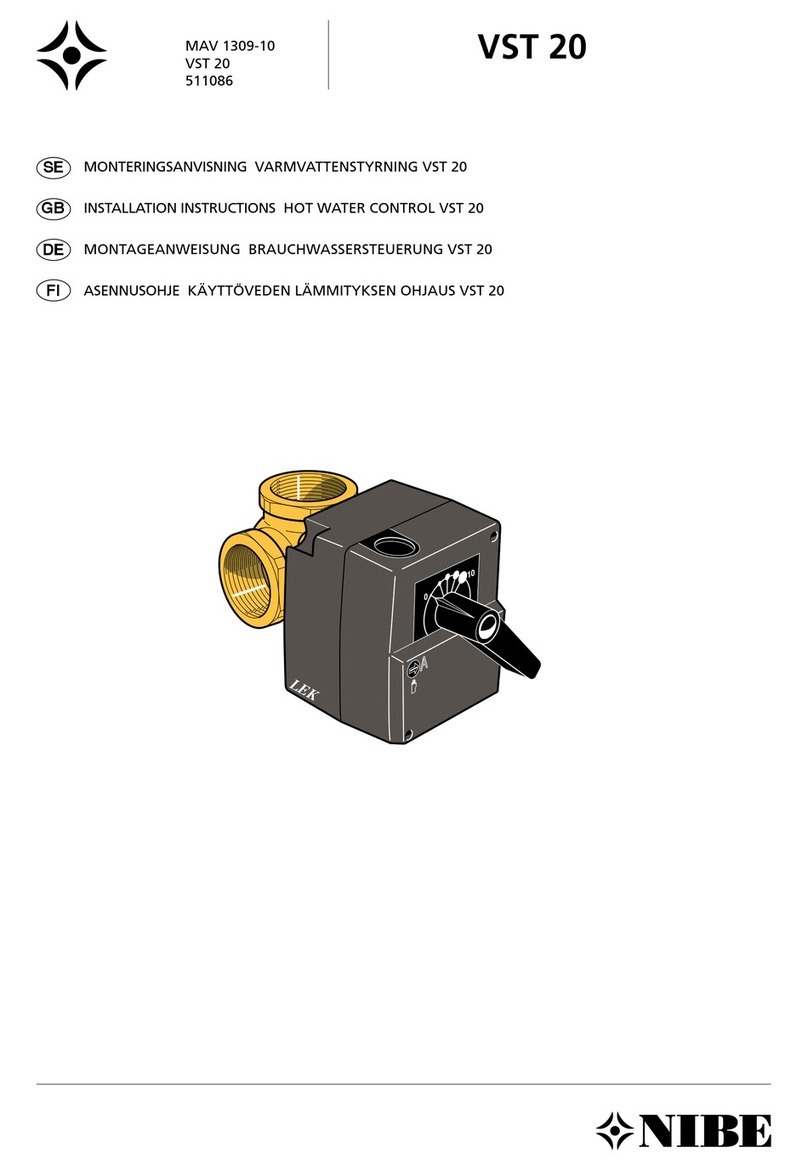
Nibe
Nibe VST 20 installation instructions
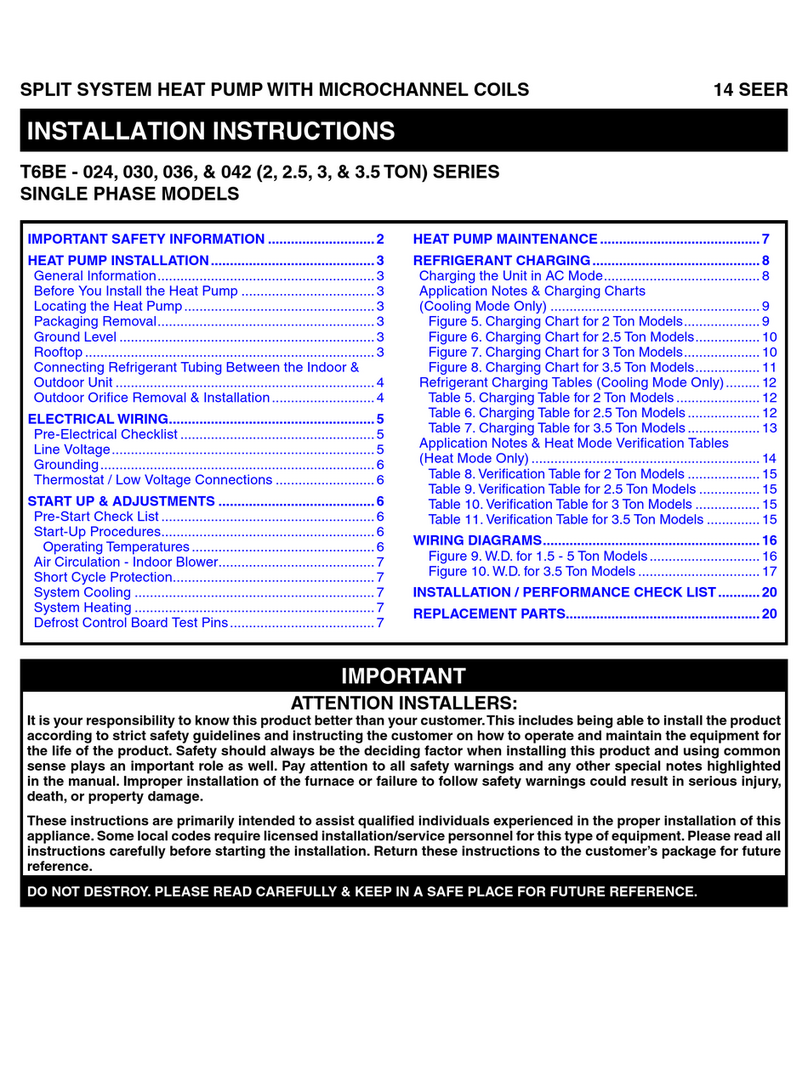
Nortek
Nortek JT6BE Series installation instructions
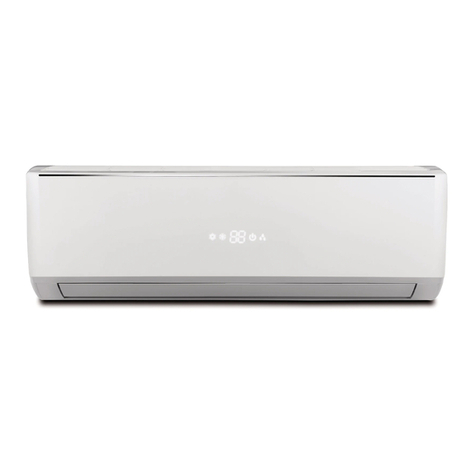
Nortek
Nortek GHH09(2.6)LUA4DH Owner's manual and installation instructions

Dimplex
Dimplex LA 11TAS Installation and operating instructions
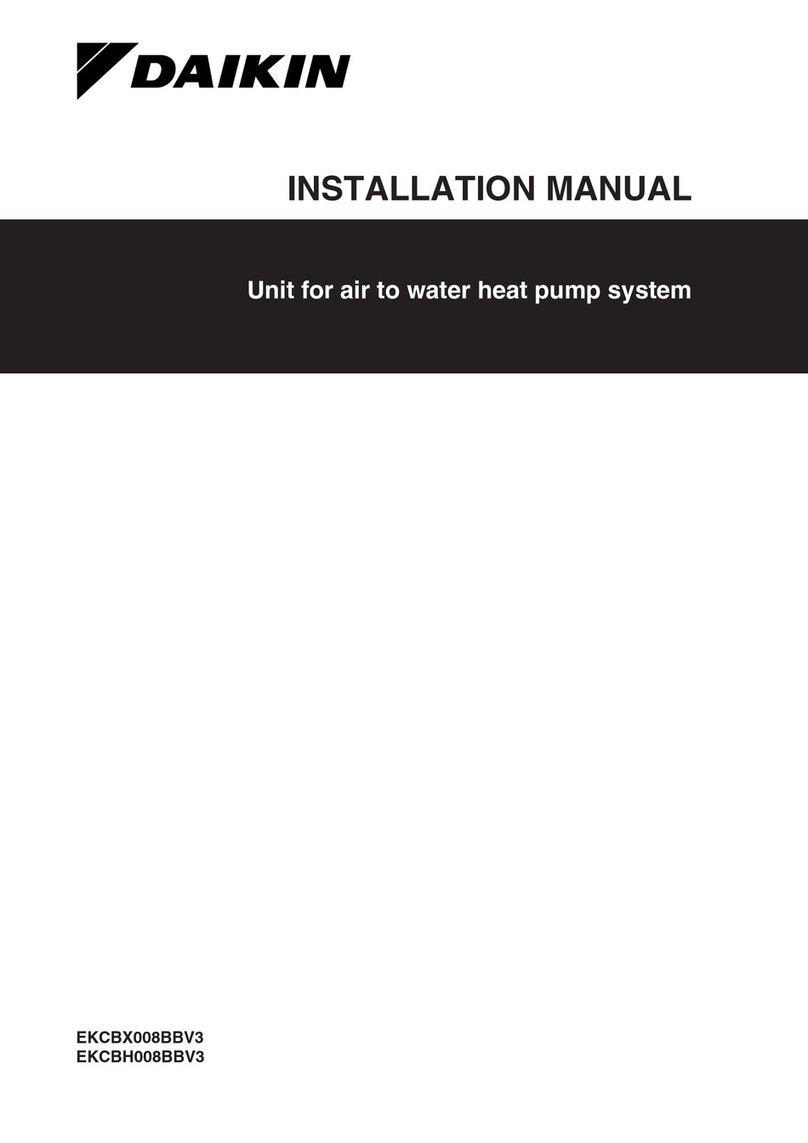
Daikin
Daikin EKCBX008BBV3 installation manual

Alto
Alto AS-H60Y installation manual


